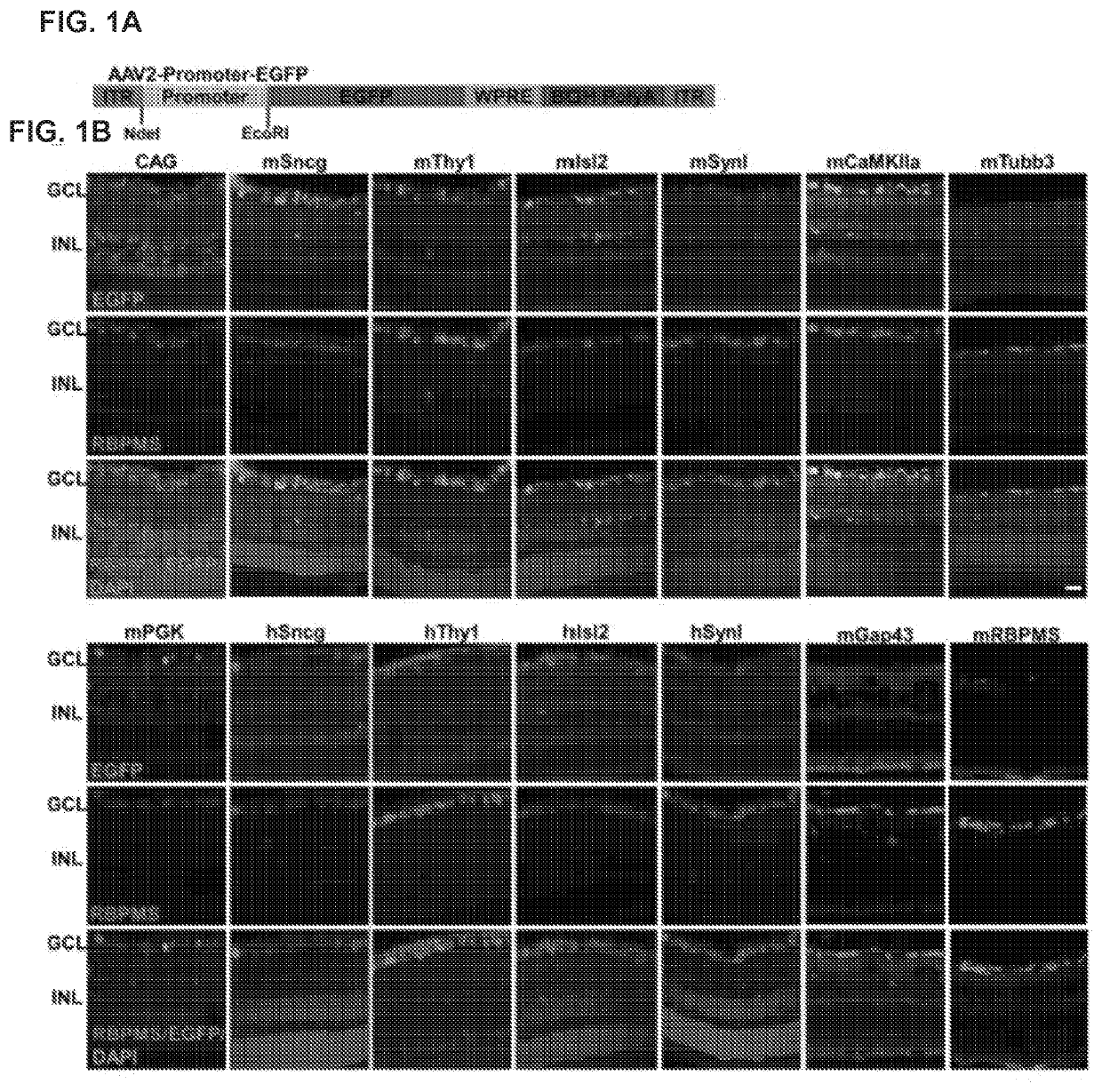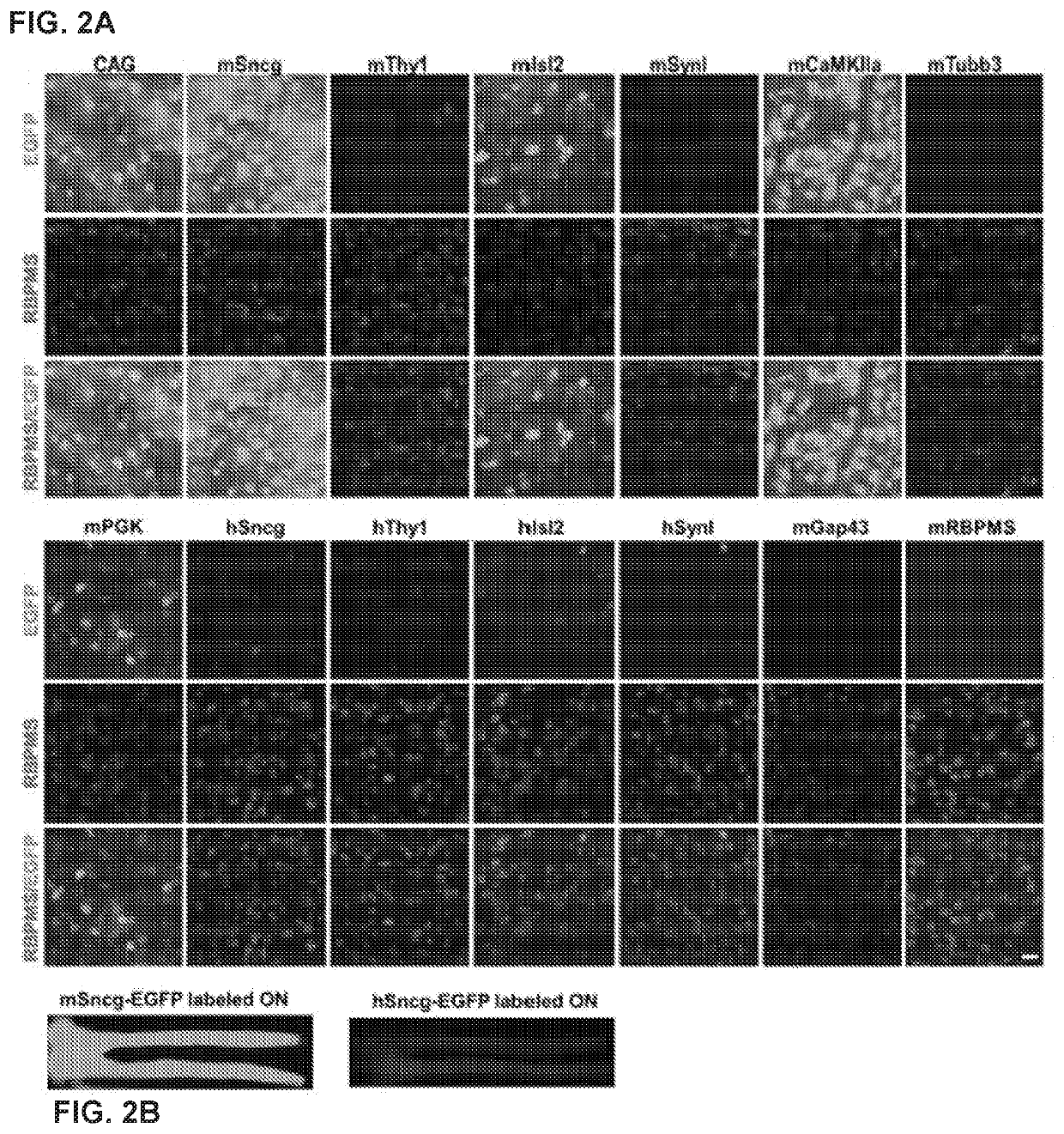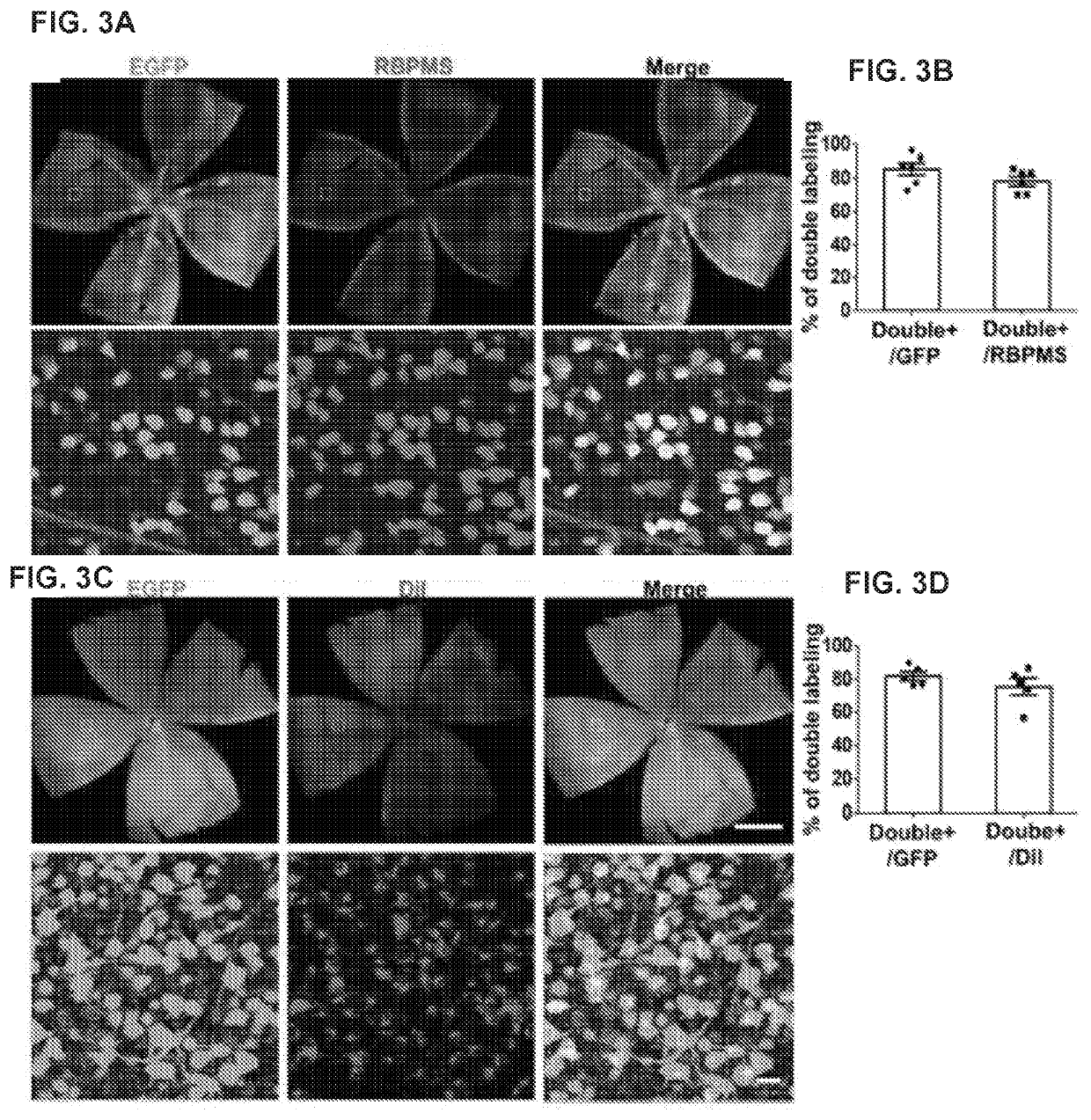Neuroprotection of neuronal soma and axon by modulating er stress/upr molecules
- Summary
- Abstract
- Description
- Claims
- Application Information
AI Technical Summary
Benefits of technology
Problems solved by technology
Method used
Image
Examples
example 1
AAV-mSncg Promoter Drives Potent GFP Expression in Mouse RGCs After Intravitreal Injection
[0169]To identify a RGC-specific promoter, a group of promoters commonly used in AAVs to drive gene expression in neurons were collected: (CAG, mPGK, mCaMKIIa (Mayford et al., 1996; Gerits et al., 2015), Synl (Kugler et al., 2003)), as well as promoter sequences predicted from several RGC-specific genes (Sncg (Surguchov et al., 2001; Buckingham et al., 2008; Soto et al., 2008; Surgucheva et al., 2008), Isl2 (Pak et al., 2004), Thy1 (Vidal et al., 1990; Spanopoulou et al., 1991), Tubb3 (Mellough et al., 2004), GAP43 (Meyer et al., 1994; Schaden et al., 1994) and RBPMS (Kwong et al., 2010; Rodriguez et al., 2014)). The promoters were subcloned into the same AAV2 backbone vector to drive expression of reporter gene EGFP (FIG. 1, panel A). Equal amounts of AAV vectors were injected into the vitreous (3×109 vector genome (vg) / eye) and used retinal cross sections to screen the tested promoters for ce...
example 2
AAV2-Mediated Transgene Expression Follows a Unique Dynamic Long-Term Pattern in Mouse RGCs
[0170]AAV rarely integrates into the host genome, and instead remains as episomes that express transgenes for a long period of time (Schnepp et al., 2003; Hastie and Samulski, 2015). To determine its expression pattern in RGCs, AAV2-mSncg-EGFP and AAV2-CAG-EGFP were injected intravitreally into two groups of mice and live fundus imaging with scanning laser ophthalmoscopy (SLO) was used to monitor EGFP expression in retina. Consistent with histological studies, the mSncg promoter drove transgene expression much more potently than CAG promoter at all time points after AAV injection (FIG. 4, panels A and B). However, both promoters showed similar dynamic expression patterns: expression peaked at 4 weeks post injection (4 wpi), decreased for several weeks thereafter, and then steadily recovered from 3 months post injection (3 mpi) to 9 mpi (the latest time point studied). Wholemounts of retinas an...
example 3
Truncated Forms of mSncq Promoter Maintain Strong Promoter Activities But Decrease RGC Specificity
[0171]The capacity of the AAV vector is about 4.7 kilo base pairs (kb) in between two inverted terminal repeats (ITRs); a shorter promoter allows larger transgene packaging. The 1.45kb mSncg promoter originally tested from upstream (5′-) was truncated into three different sizes, 1.03kb, 0.66kb and 0.27kb (FIG. 5, panel A). Wholemounts of ON and retinas demonstrated that all of these truncated forms of mSncg promoter drove strong EGFP expression (FIG. 5, panels B and C), and therefore that they retained the core promoter region. However, retinal cross sections revealed increasing INL cell labeling with increasing truncation, and therefore a noticeable decline in the RGC specificity (FIG. 5, panel D). These data suggest that upstream regions of the mSncg promoter contain cis-regulatory elements important for RGC specificity.
PUM
| Property | Measurement | Unit |
|---|---|---|
| Fraction | aaaaa | aaaaa |
Abstract
Description
Claims
Application Information
 Login to View More
Login to View More - R&D
- Intellectual Property
- Life Sciences
- Materials
- Tech Scout
- Unparalleled Data Quality
- Higher Quality Content
- 60% Fewer Hallucinations
Browse by: Latest US Patents, China's latest patents, Technical Efficacy Thesaurus, Application Domain, Technology Topic, Popular Technical Reports.
© 2025 PatSnap. All rights reserved.Legal|Privacy policy|Modern Slavery Act Transparency Statement|Sitemap|About US| Contact US: help@patsnap.com



